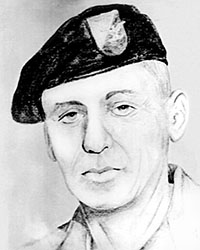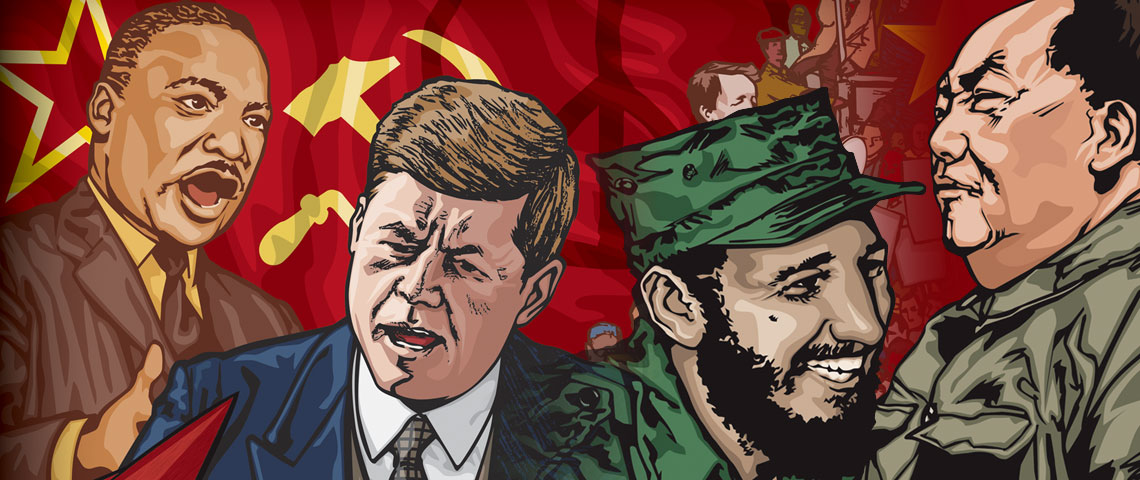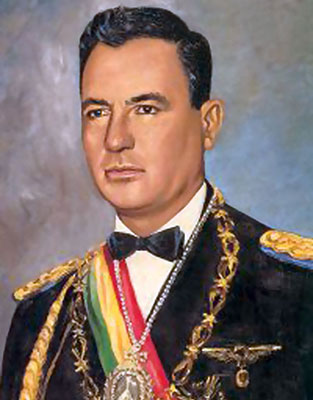FULL SERIES: SF IN BOLIVIA
- Beggar on a Throne of Gold: A Short History of Bolivia
- The 1960s: A Decade of Revolution
- The Sixties in America: Social Strife and International Conflict
- Che Guevarra: A False idol for Revolutionaries
- The ‘Haves and Have Nots’: U.S. & Bolivian Order of Battle
- “Today a New Stage Begins”: Che Guevara in Bolivia
- Turning the Tables on Che: The Training at La Esperanza
- Che’s Posse: Divided, Attrited, and Trapped
- The 2nd Ranger Battalion and the Capture of Che Guevara
- The Aftermath: Che, the Late 1960s, and the Bolovian Mission
DOWNLOAD
On Monday morning, 3 April 1967, Colonel (COL) Magnus L. Smith, the 8th Special Forces Group (SFG) commander in the Panama Canal Zone, was directed by U.S. Southern Command (SOUTHCOM) to prepare a mobile training team (MTT) for a “classified” mission. [At this time all SF MTT missions were classified until completed unless labeled very sensitive. In that case the National Security Act twenty-year classification review rule applied]. The 1967 Bolivia MTT-BL 404-67X training mission fit the “classified very sensitive” category.1
The mission was significant. A Ranger-qualified SF captain/major was to lead the element. Despite having only two SF companies assigned (the standard was three for an SF group), the 8th SFG at Fort Gulick on the Atlantic side of the isthmus, was the Special Action Force (SAF) for Latin America. At the time, there were only two Ranger-qualified captains or majors available; one was on Vietnam orders (Captain (CPT) Duane Boyer, B Company) and the other was the Group S-3 (Operations Officer), Major (MAJ) Ralph W. Shelton, who assigned MTT missions.2
“I wasn’t specially-selected; it was simply ‘luck of the draw’ that I was the only one available that met the criteria. We tried to get CPT Boyer delayed, but Department of the Army (DA) wasn’t about to do that. So, I was the guy,” said MAJ Shelton. “COL Smith told me that we were to train a Ranger Battalion for the Bolivians because the country was being threatened by Communist insurgency. An [Bolivian] Army unit had already been chewed up by a bunch of guerrillas. We didn’t know that Che Guevara was there. I was sent over to SOUTHCOM at Quarry Heights (across the isthmus) for details. I was given license to pick my sixteen-man team, but we were to deploy as quickly as possible.”3 That was the Bolivia mission for 1967. Personal thumbnail biographies up to 1967 and photos will be used to identify personnel interviewed. The bios reflect the experience that these SF soldiers “brought to the table” for the Bolivia mission.
This issue of Veritas will explain the 8th SFG missions to Bolivia in 1967: to organize and train a Ranger Battalion; to train nine infantry rifle companies in small unit tactics and counterinsurgency (COIN) operations and afterwords; to advise the Airborne Battalion and to teach COIN operations to junior officers at the Combat Arms School in Cochabamba.6 The capture of Ernesto “Che” Guevara and the annihilation of the Cuban-led guerrilla insurgency by the SF-trained Bolivian Rangers demonstrated the value of COIN training and validated the precepts of foreign internal defense (FID). However, the significance of this training mission was overshadowed by an escalating social turmoil that threatened America (the Detroit riots and civil rights demonstrations in Washington) and the huge Communist offensive throughout South Vietnam beginning in November 1967 and extending through January 1968 (popularly known as the Tet Offensive of 1968).

Considering this SF mission in the context of the greatest period of social upheaval in American history, the 1960s, the reader can better appreciate how important, complex, and sensitive this assignment was. Instead of complicating the history with the myriad of works that have been published afterwards, many of which are sensational, hypothetical or polemic, like the diaries of Che Guevara, official Cuban Communist Party accounts, and intelligence officer memoirs, the old Mission Area Analysis (MAA) format will rely almost entirely on what was available to the 8th SFG soldiers preparing for the mission in 1967. It is not our intent to analyze why the mission succeeded, why the Bolivians were able to eliminate the insurgency, nor why Che and his Cuban-led effort to start a continental revolution in South America failed. MTT-BL 404-67X will be explained as Major “Pappy” Shelton and his fifteen-man team understood the mission then.

